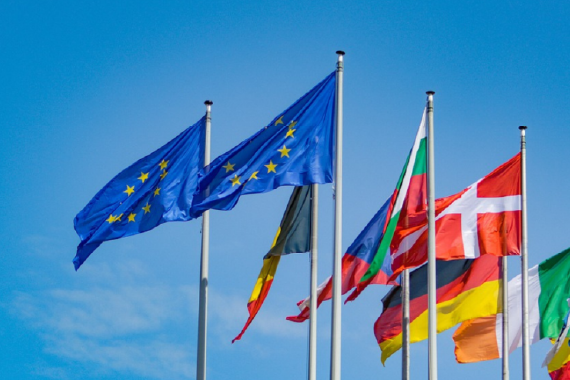We collaborate to achieve sustainable success
Get in touch with usThe Digital Backbone of F-Gas Compliance: Navigating the F-Gas Portal and Automated Customs Controls
The European Union's F-Gas Regulation (EU) 2024/573, effective since March 11, 2024, has introduced a comprehensive overhaul of environmental policy, accelerating the phase-out of fluorinated greenhouse gases (F-gases). At the heart of this intensified regulatory framework lies the F-Gas Portal, a centralized digital platform that serves as the indispensable backbone for F-gas compliance. For importers of pre-charged equipment, mastering the functionalities and understanding the implications of this digital hub, especially its planned interconnection with customs controls, is paramount for ensuring market access and avoiding severe penalties.
The F-Gas Portal is the European Commission's online platform designed to manage the HFC quota phase-down, facilitate import and export requirements, and streamline reporting obligations under the regulation. It serves as the primary hub for registering all market participants, tracking HFC quota allocations, and monitoring compliance with all reporting and certification requirements.
Mandatory Registration and Meticulous Data Management
Registration in the F-Gas Portal is mandatory for all market participants, including importers of products or equipment containing F-gases. This registration is a prerequisite for all customs procedures, with the sole exception of temporary storage. Businesses must meticulously keep their records up-to-date within the portal. Any inaccuracies or delays in submitting organizational details, business specifications, or HFC quota information can trigger immediate scrutiny and penalties, potentially leading to customs delays or outright seizure of goods. The portal aims to bolster traceability, transparency, and regulatory oversight, thereby helping to prevent illegal imports and other non-compliant activities.
Centralized Hub for Quota Management
The F-Gas Portal plays a critical role in the HFC quota system, which dictates the overall quantity of HFCs that can be placed on the EU market. All transactions related to transferring and authorizing quotas must occur within this portal, making it the indispensable single source of truth for HFC market volumes. This centralized system enables the European Commission to annually allocate quotas to individual producers and importers. For importers, the portal is where they secure the necessary authorizations or delegated authorizations prior to equipment being released for free circulation within the EU.
Enhanced Reporting and Verification Through the Portal
The 2024 regulation significantly fortifies reporting requirements, with the F-Gas Portal serving as the submission gateway. From 2025, new minimum reporting thresholds apply: 10 tonnes of CO2 equivalent for HFCs and 100 tonnes of CO2 equivalent for other F-gases, with reports due by March 31st each year for the previous calendar year's activities. This expands the number of businesses subject to reporting obligations.
Crucially, the F-Gas Portal is central to the mandatory third-party verification of pre-charged equipment imports. Businesses importing equipment pre-charged with F-gases must obtain third-party verification of their documentation for the previous calendar year if the HFC quantity is 1000 tonnes of CO2 equivalent or more. This report is due by April 30th, starting from 2025, and must be prepared by an independent auditor registered in the F-Gas Portal and submitted through the portal. This adds a crucial layer of external validation to reported data, demanding exceptional accuracy and timeliness in business record-keeping.
Automated Customs Controls and Digital Interconnection
A major leap in digital governance is the planned interconnection of the F-Gas Portal with the EU Single Window Environment for Customs. This signifies a critical development in digitalized customs controls, with designated customs offices being prioritized for connection to the portal.
This interconnection allows for real-time verification of quotas and importer status during customs clearance. Customs personnel receive specialized training and have access to equipment for physical checks of F-gas products. The system enables cross-checking of reported data against actual imports and other activities, creating a "digital fingerprint" for F-gas containers and equipment to aid enforcement. This robust digital audit trail makes it exceptionally difficult to falsify documentation or bypass quota requirements, significantly enhancing authorities' ability to detect non-compliance and illegal activities at the point of entry.
For importers, this level of digital oversight demands unparalleled accuracy and timeliness in business record-keeping. Any discrepancy can immediately flag a shipment for further scrutiny, leading to delays and investigations. The F-Gas Portal is thus not just an administrative tool; it is the central nervous system of the EU's F-gas regulatory framework, enabling a level of transparency and enforcement that makes comprehensive and meticulous compliance indispensable for all market participants.

